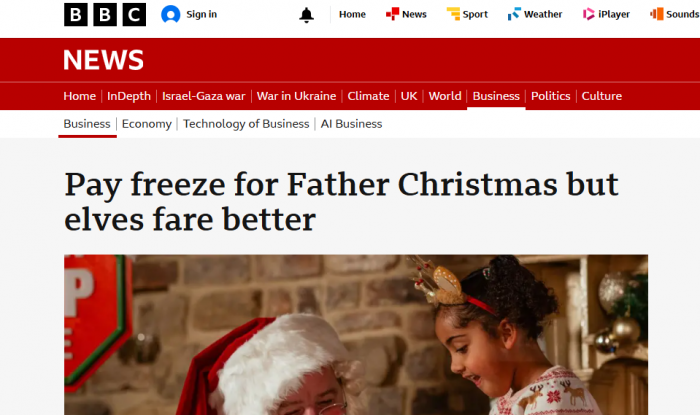
Insights | 18 Dec 2025

This year’s public sector pay round is one that the Government would probably rather forget. Characterised by extensive industrial action, even or perhaps especially by staff covered by Pay Review Bodies (PRBs), a number of negotiations and outcomes remain to be concluded. Meanwhile, for the major groups that have settled, pay rises have ranged from 5% up to around 10% for some lower-paid staff.
One interesting feature of this year’s round is that the pay rises for those groups whose pay is normally subject to traditional collective bargaining, like fire service staff, or those who would normally be covered by PRB recommendations but who opted for negotiations due to dissatisfaction with the usual pay-setting process, such as NHS staff, are at the lower end of the range of increases. By contrast, those subject to the PRB process, which eschews traditional collective bargaining in favour of the presentation of evidence by the various parties, did slightly better on the whole.
The Government will be hoping that this will future-proof the PRB process, which had come under criticism from some on the employee side for producing recommendations that, while favourable to government, were too low to meet staff aspirations at a time when inflation was high and rising. It may well do so, but one PRB recommendation – that for teachers in England – was made after a campaign of industrial action by the largest teaching trade union (the NEU), and the possibility of similar action by other teaching unions. And other recommendations were made against a backdrop of industrial action. This shows that, in certain circumstances at least, traditional collective bargaining methods can be brought to bear on the PRB process, apparently with a certain amount of success.
The reason the NEU accepted the recommended increase and called off its action was due to guarantees that the pay rise would not involve cuts to schools, but instead be funded by ‘reprioritisation’ of spending from elsewhere in the Department of Education’s budget. This was another feature of this year’s round of PRB awards, all of which entailed some kind of reordering of spending priorities within existing budgets in order to divert funds to pay increases. While the Government in its statements on the awards referred to 'protecting frontline services' in the case of the NHS and schools, this nevertheless raises the prospect of cuts elsewhere. In addition, some of the increase for doctors and dentists will be funded by a rise in the health immigration surcharge, while separately the Prime Minister has also said that a planned rise in the cost of migrant workers' visas will flow through to higher pay, both of which measures have been criticised by some commentators as divisive in the context of an NHS that is partly staffed by migrant workers.
As in previous years, some outcomes in Scotland have been greater than for their equivalents south of the border. The key example in this regard is that for NHS staff. However, the Scottish Government’s public sector pay strategy for this year has set a central metric for increases of 3.5%, with a floor of 2% and a ceiling of 5%. This may mean that the NHS outcome turns out to be something of an outlier, at least for those groups under the direction of Holyrood. The offer to staff across local government in Scotland is a good deal higher than the central stipulation, but as in England and Wales, negotiations have stalled.
The area missing from the table is of course the civil service, which is tightly subjected to the Treasury’s pay remit process. This year the Exchequer stipulated that civil service pay awards should be worth up to 4.5% on average, with an additional 0.5% available for targeting at lower pay bands. As a result, the majority of outcomes are likely to centre on this, though most have yet to be concluded for 2023.
Those groups still in dispute include, most prominently, so-called ‘junior’ doctors – actually qualified doctors undertaking clinical training, with anything up to eight years’ experience in hospitals, who make up a significant part of the NHS’s medical workforce – who are still conducting a campaign of industrial action in support of their claim. They have been offered 6% plus an additional consolidated payment of £1,250. Similarly their supervisors – consultants – have been offered 6%, but in both cases to no avail so far. The chart below provides an insight into their grievances. While earnings for other public sector professions have grown to some extent since 2016, those for doctors have flat-lined, with no change at all over this period. And these are nominal or actual figures. In real terms, that is adjusted for inflation, the trend is even worse.
The picture in the NHS is further complicated by the fact that the Society of Radiographers who, although covered by the offer that other groups have accepted, have rejected it and continue with their campaign of industrial action. And perhaps more significantly there is the Royal College of Nursing who voted against the same offer but in a ballot where the numbers fell short of the numbers required by the Government’s strict criteria for legal industrial action.
In normal circumstances these groups would be able to reach deals of some sort with the Government but that appears to be unlikely. If this conclusion is correct, then it is possible that disquiet over pay will continue to figure as an issue in the health service, even as thoughts turn to next year.
Recruitment and retention
Public sector staff concerns are not simply to do with the cost of living and the value of their pay in relation to it. This year’s strikes have taken place against a backdrop of severe recruitment and retention problems. Employee retention in the public sector had long been easier than in the private sector, mainly thanks to better pensions, but underfunding is severely affecting morale and this has made retention a much bigger issue than hitherto.
All of this year’s PRB reports devote significant space to it and not just that for NHS staff, which raises it most often. For example, that for doctors and dentists refers to ‘high demand and constrained workforce supply’, with ‘high workloads affecting retention’. In prisons the PRB regards retention as a serious issue and reports: ‘Many prisons stated that they were struggling to fill vacancies, due to a lack of applicants and worsening retention.’ In the police service, the number of leavers is up sharply, while schools have seen high numbers of teachers leaving in the early years of their careers, with leadership retention also an issue.
Therefore while the Government will be hoping that a fall in the rate of inflation might make for a less fraught pay round in 2024, recruitment and retention should remain a key issue. While weak economic growth and fears of recession have made attraction and holding onto staff in the private sector a little easier than hitherto (though problems remain in many areas), the difficulties facing the public sector – based as they are on issues around central funding – are likely to persist.
The broader labour market is unhelpful in this regard as well. Levels of economic inactivity (the numbers of people neither in work nor looking for work) are still way above pre-pandemic levels, and this presents as a tightening factor in the labour market. Meanwhile the population is ageing overall and immigration from EU countries has fallen significantly. This has been replaced to some extent by arrivals from the rest of the world, but most of these are students who will return to their home countries in fairly short order and cannot be relied upon to solve the UK’s labour market problems.
In some ways, the labour markets in the private and public sectors can be seen as operating according to a cycle whereby as one loosens the other remains tight. This is roughly analogous to the cycle in pay. When the private sector forges ahead, the public sector tries to catch up, as evidenced by the charts below, showing basic pay awards on the one hand, and average weekly earnings growth on the other.
The table shows the gap in terms of basic pay awards for the latest available period, that includes the key month, in pay-setting terms, of April. This is the point of the year to which most of the PRB awards, announced late this year as in previous years, are backdated. Given this gap, the air of predicament surrounding public sector pay-setting could well continue.